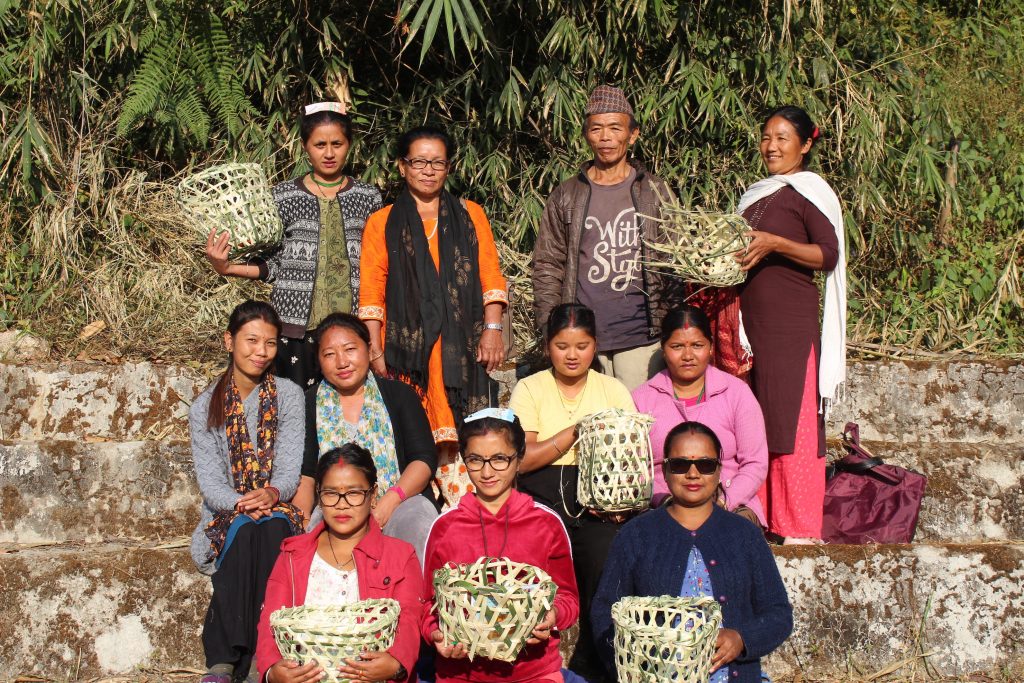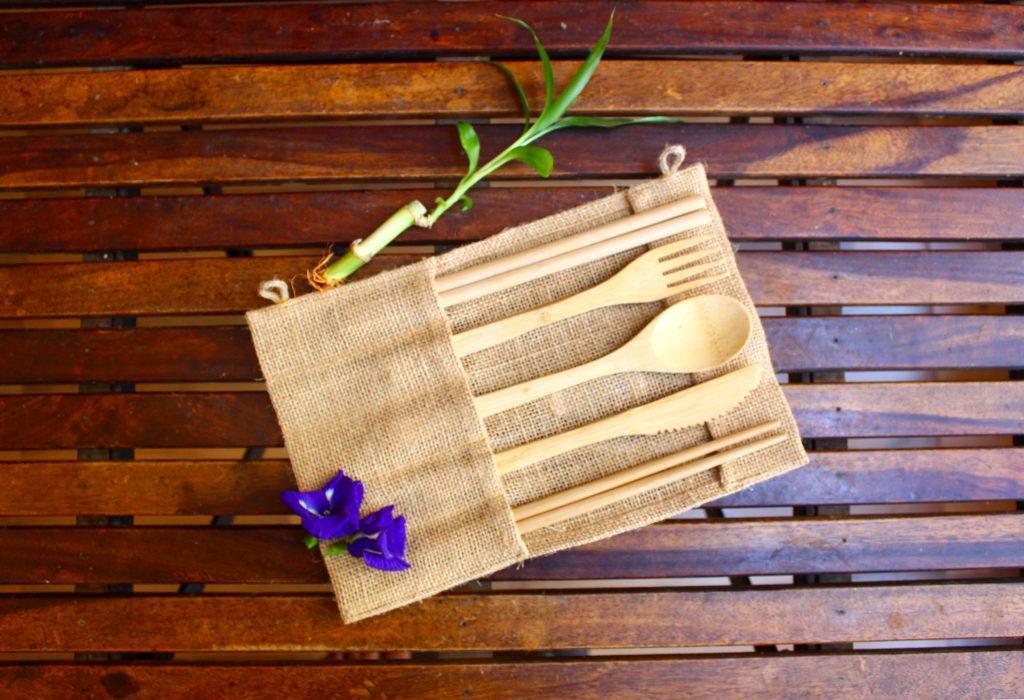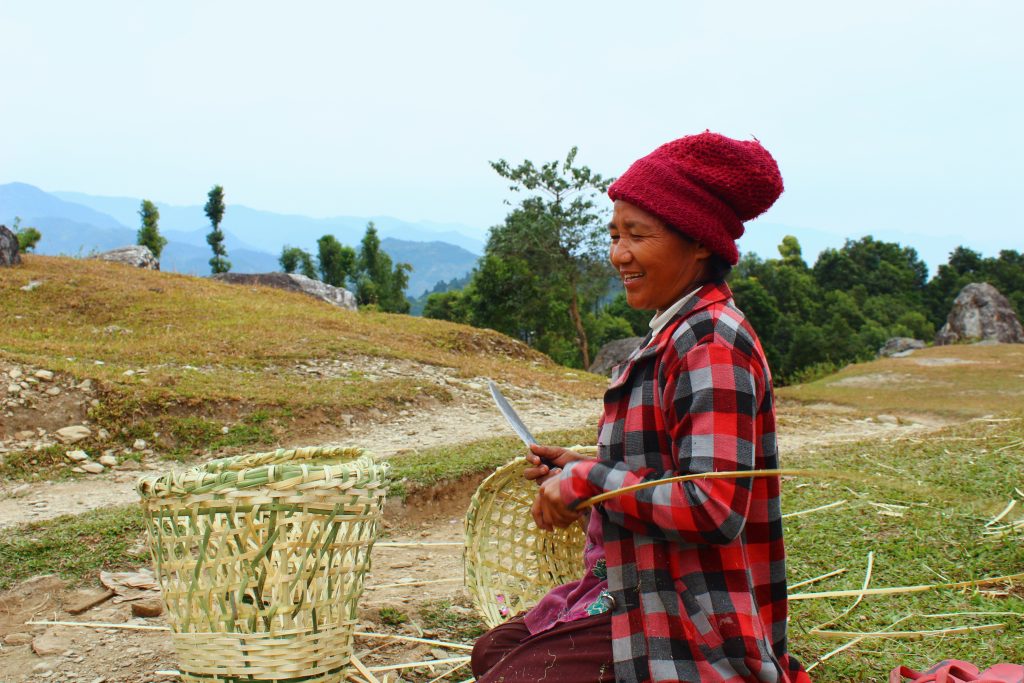Bamboo plant holds not just ecological riches, but also the potential for sustainable livelihoods and social empowerment, particularly for rural women in Bamboo industry. Across the globe, and more importantly in the Global south, women in communities dependent on Bamboo are increasingly playing a pivotal role in harnessing this fast-growing, versatile plant while ensuring its long-term viability.
A Boon for Livelihoods and Environment
- Equal Opportunities & Sustainable Income: Equal opportunity for women and the generation of sustainable income are closely intertwined goals that can be effectively addressed through the cultivation and utilization of bamboo. Bamboo, often referred to as the “green gold”[1], presents an excellent opportunity for women to engage in practices that not only contribute to environmental sustainability but also offer avenues for economic empowerment. Scientific research highlights bamboo’s rapid growth makes it ideal for a wide range of products, from textiles and handicrafts to construction materials and biofuels. Collectives of women (often in SHGs promoted under NRLM or by other resource institutions) can tap into this potential to create sustainable livelihoods. This approach not only supports gender equality by providing women with equal access to resources and economic opportunities but also fosters community resilience and contributes to the mitigation of climate change.
- Eco-friendly Materials: The rapid growth and efficient carbon sequestration make bamboo an ideal alternative to deforestation-prone resources. Rather than launching brand-new (untested and expensive) carbon farming projects and initiatives, it makes more sense to provide greater support to the thousands of rural women farmers and organizations that are already developing perennial crop and cropping systems and other carbon-sequestering practices. Rural women are at the forefront of implementing sustainable harvesting practices, ensuring the bamboo forests’ health for future generations.
- Support Traditional Skills: Rural women are the custodians of generations-old knowledge and skills related to bamboo. Their expertise in weaving baskets, dyeing, intricate, strong and crafting unique products adds immense value to the bamboo industry while preserving cultural heritage. It becomes critical that this knowledge gets diffused and the learning get passed to the following generation to ensure that the crafts and skill sets can be capitalized upon.

Managed Bamboo Farming
Bamboo Cultivation and management is an ancient practice in Asia, America, Africa, and North America. Bamboos are among the handful of plants labeled the most useful on the planet. Managed Bamboo is currently grown on more than 22 million hectares (54 million acres) worldwide, in addition to wild bamboos. There are about 1,450 species worldwide. More than 1,500 uses have been recorded of this global crop, making bamboo the undisputed champion of multipurpose managed bamboo forests that have been found to sequester more carbon than wild bamboo biomass crops. [2]
Bamboo Farming is an example of a type of regenerative farming practice that sequesters more carbon than wild nature. Carbon sequestration ranges from 8 to 34 t/ha/yr, with lifetime aboveground and soil totals of 60 to 288 t/ha. The world’s 22 million-plus hectares of Bamboo are estimated to store a total of 727 million tons of carbon. Bamboo’s main limitation is its need for a relatively humid climate, although a few species tolerate semi-arid conditions. While the growth aspects of bamboo make it an ideal instrument for social and economic change, there are challenges such as market demand, voices need to be fair.
Out of the 132 reporting countries in the Food and Agriculture Organization (FAO) Forest Assessment Report for 2020, 23 claimed bamboo resources, totaling 35 million ha in area. This area has increased by almost 50% from 1990 to 2020 [3] and is also projected to continue to expand its range under most climate change scenarios [4,5]. Bamboo’s contribution to climate change mitigation, as an NbS, can be categorized into: (i) bamboo forest biomass acting as a carbon sink, (ii) carbon storage through bamboo products, and (iii) carbon credits from bamboo forest projects [6].
A story untold of managed forests worth more than gold. Where communities prosper, hand in hand, nature and livelihood, on sustainable land. In every shoot, a promise takes root, managed bamboo, bearing sustainable fruit. Unmanaged, individual culms die after about 10 years, although the clump or stand persists. In managed bamboo stands, culms are cut out on reaching maturity, stimulating new growth. This is what accounts for the superior carbon sequestration in managed versus wild bamboo forests. The cut culms are treated and can store carbon for decades in their new home.
Harvest and Processing of Bamboos
There are two primary types of Bamboos. Selective harvests, each culm carefully chosen, ensuring growth, a cycle unbroken. Clumping, or sympodial, species form clumps and do not spread aggressively. They are mostly tropical and subtropical, with a few temperate species. Both types of Bamboo sprout new culms every year. These culms take several years to harden off before they are ready for harvest as construction material. Clumping bamboos include the largest bamboos, with some species reaching 36 meters (118 feet) with culms 30 centimeters (12 inches) in diameter. They include the best timber and construction species.
Carbon Farming applications
Clumping bamboos are commonly grown on diversified farms and in agroforestry systems. Many Bamboos grow well in the shady understory of taller crop trees. Some are used as fodder banks and windbreaks. Bamboos are often intercropped with annuals during establishment years. Clumping bamboos are intercropped with fruit trees and vegetables. Running Bamboos are intercropped with timber trees. Perennial crops have reduced needs for fuel, fertilizer, and pesticides. Carbon farming systems include important tools for reducing agricultural fossil fuel emissions.
Reducing Agricultural Emissions
We can reduce carbon, methane and nitrous oxide emissions from soil by Carbon Sequestration. Agricultural carbon sequestration involves removing excess carbon dioxide from the atmosphere and storing it in soil organic matter and in the above ground biomass of long-lived plants and trees (perennials).
Multipurpose Usage of Bamboos
Bamboo is becoming an increasingly popular choice in both Biophilic Design and Sustainable construction
Recent advances in treatment of Bamboo culms means they can last for decades. Construction may be the most important use of Bamboo. The big timber bamboos can be used to build almost every element of building, from central timbers to framing to paneling and flooring to roofing shingles. Scaffolding towers, reaching for the sky, bamboo’s strong spirit, whispering secrets at night. Homes rise sturdy, woven walls, a haven built by skillful, knowing hands. Bamboo construction is particularly important in disaster response. Bamboo housing is unusually resistant to earthquakes.
In the transportation sector it is used for boats, rafts, and bicycle frames. Bamboo is used in bridges, fencing, cables, and reinforced concrete. Bamboo scaffolding is used in the construction of even very tall skyscrapers.
Bamboo is a promising alternative raw material for the paper industry, offering several advantages
Bamboo is a better feedstock for paper and cardboard than destructively harvested trees. It can yield six times the pulp per hectare of pine plantations. Bamboo fibers are strong, long and flexible, similar to wood pulp used in traditional papermaking. This allows for the creation of high-quality paper with good strength and durability. In some regions, bamboo can be a more cost-effective raw material than wood pulp. This can be especially beneficial for paper manufacturers looking to reduce production costs. As technology advances and processing methods become more efficient, bamboo pulp is likely to play an increasingly significant role in paper production.
Bamboo plays a dual role in Culinary traditions around the world

- Edible Bamboo Shoots: Culinary magic, skewers dance and spin, flavorful aromas, a feast within. And humans relish the young shoots of many species as a vegetable. The young shoots of certain bamboo species are a popular vegetable in many Asian cuisines, including North-east Indian, Chinese, Japanese, and Korean. They can be boiled, stir-fried, pickled, or fermented and have a slightly sweet and nutty flavor.
- Bamboo Cutleries & Utensils: Bamboo is also a favored material for making cooking utensils due to its durability, heat resistance, nonstick properties, and regenerative. Common bamboo kitchen tools include spoons, spatulas, steamers, and cutting boards.
Bamboo is a versatile and sustainable material used for centuries in the handicraft Industry
- Bamboo basketry: Bamboo Baskets are a classic handicrafts item, used for storage, laundry, and many other utilities. They come in all shapes and sizes, and can be intricately woven with designs or dyed in different colors.
- Crafts & furniture: Bamboo craft & furniture are both stylish and also eco-friendly. It can be used to make chairs, tables, sofas, beds, and even lamps. Bamboo furniture is known for its durability and lightweight construction. Properly treated, bamboo can be used as plumbing. Sections of Bamboo culms make great nursery pots and coffee mugs.
- Decorative Items: Bamboo can be used to create a wide variety of decorative items, such as picture frames, wall hangings, and sculptures.
Bamboo can be valuable tool in aquaculture
The foliage can be fed to ruminant livestock and even aquaculture fish as fodder. Due to their tough and fibrous nature, fish generally cannot directly consume whole bamboo leaves. Research indicates that processing bamboo leaves (such as chopping or fermenting) might make them more palatable and digestible for fish. Bamboo leaves and shoots that fall into the pond can decompose and release nutrients into the water. These nutrients can be taken up by phytoplankton, which in turn serves as food for fish. Additionally, bamboo leaves contain some nutrients that could be beneficial for fish health. Bamboo poles or structures placed in fish ponds can provide a surface for the growth of algae, microbes, and other organisms that fish can graze on. This can be a good source of supplemental nutrition for many fish species. More studies are needed to determine the optimal way to process bamboo leaves for fish consumption and fully understand the nutritional value they provide for different species.
Shomaa Designs’ success story demonstrates the positive impact that social enterprise can have on women empowerment and promoting sustainability in the bamboo industry. Here’s a summary of the resilient efforts of woman owned enterprise made the changes in the life of rural women:
- Forming Bamboo Collectives: Shomaa Designs helps rural women form collectives, which give them access to resources, and markets. This enables them to participate more effectively in the bamboo industry.
- Women Empowerment Community Centre: Shomaa Designs has helped numerous rural women become economically independent by providing training to these women in areas like bamboo cultivation, handicraft creation, and business management. This equips them with the skills they need to succeed in the industry.
- Market Access: Shomaa designs helps women artisans connect with markets to sell their bamboo products. This provides them with a source of income and financial independence.
- Improved Livelihoods: Earning income allows women to better provide for their families’ needs, invest in education and healthcare, and raise their overall standard of living.
Based on the mission of Shomaa designs, we need more women owned enterprises to become a leading force in empowering rural women through the bamboo handicraft industry. Empowered rural women can establish a sustainable and thriving bamboo handicraft sector that fosters economic development and environmental consciousness.
Reference:
- Kittur, B. H., Jhariya, M. K., Raj, A., & Banerjee, A. (2022). Natures green gold: Strategies to improve livelihoods and sustainability through bamboo resource. Climate Change and Environmental Sustainability, 10(1), 82-92.
- https://wikifarmer.com/women-empowerment-bamboo-industry-in-rural-areas/
- Food and Agriculture Organization. Global Forest Resources Assessment 2020: Main Report; Food and Agriculture Organization: Rome, Italy, 2020. [Google Scholar]
- Jin, J.; Jiang, H.; Xu, J.; Peng, W.; Zhang, L.; Zhang, X.; Wang, Y. Predicting the Potential Distribution of Bamboo with Species Distribution Models. In Proceedings of the 2012 20th International Conference on Geoinformatics, Hong Kong, China, 15–17 June 2012; pp. 1–4. [Google Scholar]
- Zhang, M.; Keenan, T.F.; Luo, X.; Serra-Diaz, J.M.; Li, W.; King, T.; Cheng, Q.; Li, Z.; Andriamiarisoa, R.L.; Raherivelo, T.N.A.N.; et al. Elevated CO2 Moderates the Impact of Climate Change on Future Bamboo Distribution in Madagascar. Sci. Total Environ. 2022, 810, 152235. [Google Scholar] [CrossRef]
- Lou, Y.; Li, Y.; Kathleen, B.; Giles, H.; Guomo, Z. Bamboo and Climate Change Mitigation; International Network of Bamboo and Rattan: Beijing, China, 2010. [Google Scholar]

